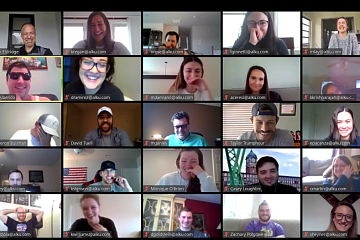
Actionable steps leaders can take right now to improve workplace diversity and boost bottom line as we potentially face a recession.
U.S. economic indicators remain complicated. Two successive quarters of negative growth hint at a recession, but the overall signal offers a misty conclusion. Either way, all this uncertainty leads to anxiety in the workplace.
What is clear is that through our research, we've found that organizations with a robust Diversity & Inclusion (D&I) strategy fare better than others in times of economic decline.
In fact, diverse and inclusive companies outperformed the stock performance of less inclusive companies by 400% during the Great Recession.
Cultivating diversity in the workplace is not just the right thing to do; it's vital for business resilience. Smart leaders and businesses know inclusive practices that facilitate listening, understanding, and action is essential to growth and profitability.
With that in mind, effective D&I leaders are more important than ever.
How D&I leaders can recession-proof their organizations
There are a number of ways that you can prepare to grow as your rivals shrink:
1. Quantify the employee experience
First things first – are you using a tool to measure employee experience?
In order to create an effective D&I strategy, leaders must first be able to accurately evaluate workplace culture and the collective employee experience. The easiest way to do so is via an employee feedback tool.
The size and structure of your organization may determine which tool is the best fit. Some examples of employee communication tools include employee surveys, town hall meetings, your company intranet, chat tools, and feedback forms.
When choosing a tool, make sure you are able to compare the experience of different demographic groups. The unique experiences of key employee groups such as women, people of color, frontline managers, hourly workers, and tenured employees will tell you how your D&I strategy is performing.
If you don’t have a tool that enables you to reliably track this information, it’s time to get one. The Trust Index™ survey is a research-backed, proven and easy way to find out what’s really going on inside your organization.
2. Ask powerful questions
Now that you have a holistic view of your workplace culture across all employees, your second step is to help managers understand this information and, most importantly, take action.
Talking about differences in employee experience can be difficult and full of nuance, so it’s essential to be clear about what questions managers need to ask. Equipping managers with the proper language to tackle these discussions makes it easier to gather the information leadership needs to enact organizational change.
If your managers don’t feel comfortable or confident asking for and acting on feedback, consider providing them training and management support.
In addition to the language, your leaders will need intentional feedback loop systems. Explain to every manager exactly how you expect them to
- Share the great ideas they hear
- Take action to make them happen when possible
- Raise up issues to senior leaders to get roadblocks removed
You may need to create new processes or communication channels to support these activities. If those are already in place, great! You and your managers have a golden opportunity to review and refine them.
3. Bridge perspectives with the C-suite
Now that your people managers have done the work of listening to employees, D&I leaders can step in to bridge perspectives between the C-suite and the rest of the organization.
During economic decline, contingency cost-cutting plans often have an outsized effect on marginalized groups.
To strengthen your organization in turbulent times, we encourage you to look at these issues through a D&I lens. You can encourage the executive team to:
- Include a diverse group of stakeholders in decisions about restructuring
- Explore questions like, "How will this change impact different employee groups?"
Giving employees a voice in decisions that affect them has a huge positive impact on employee experience and in the outcomes of business transformation. Taking the time and effort to communicate in times of change can go a long way toward helping employees feel safe and secure and promoting transparency throughout the organization.
4. Are employees not responding? Find out why
D&I leaders need to know why employees are choosing not to identify in their feedback surveys and take action.
Pay attention when a large number of employees select "prefer not to respond" (PNTR) in an employee survey rather than identifying their race, sexual orientation or other identities. This can signal a larger problem of a lack of trust in a workplace. When employees choose PNTR frequently, it suggests that the idea of bringing their whole selves to work makes them feel unwelcome or unsafe.
And when trust is low, innovation and productivity suffer.
To figure out why certain groups of employees choose PNTR more than other groups, you can consolidate feedback from your employee experience data set. This helps you find common themes and experiences within and between groups who do and do not self-identify.
Several tools can help you understand the gaps in experience:
- Small forums
- Pulse surveys
- One-on-one interviews
The lessons you learn from these interactions can help you start to close those experience gaps.
Don’t forget to build on what your organization does well. Look for business units or locations with PNTR less than 10%, then find out what their leaders are doing to make employees feel welcome, safe and valued.
D&I drives growth for people and business
D&I leaders are doing essential work that has a positive measurable impact on both people and business results.
When all employees have consistently positive experiences of inclusivity, fairness and integrity in the workplace, it’s better for your people and better for business.
Great Place To Work is ready to support you and your organization as you build a great workplace for all and use D&I strategies to recession-proof your business.
For more research and advice on how leaders can help propel their teams through workplace challenges, sign up for our newsletter where we share latest reports and other content.












